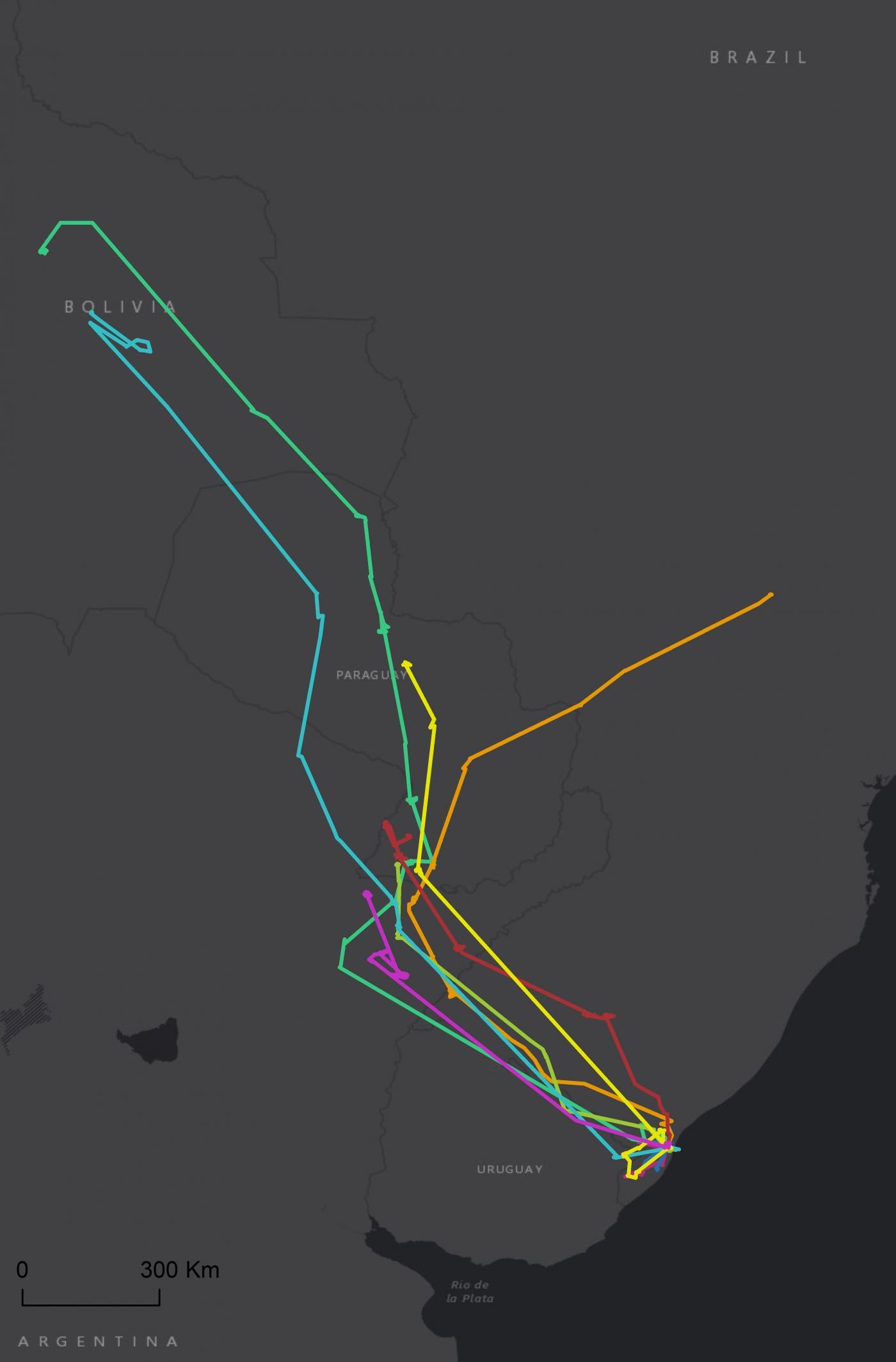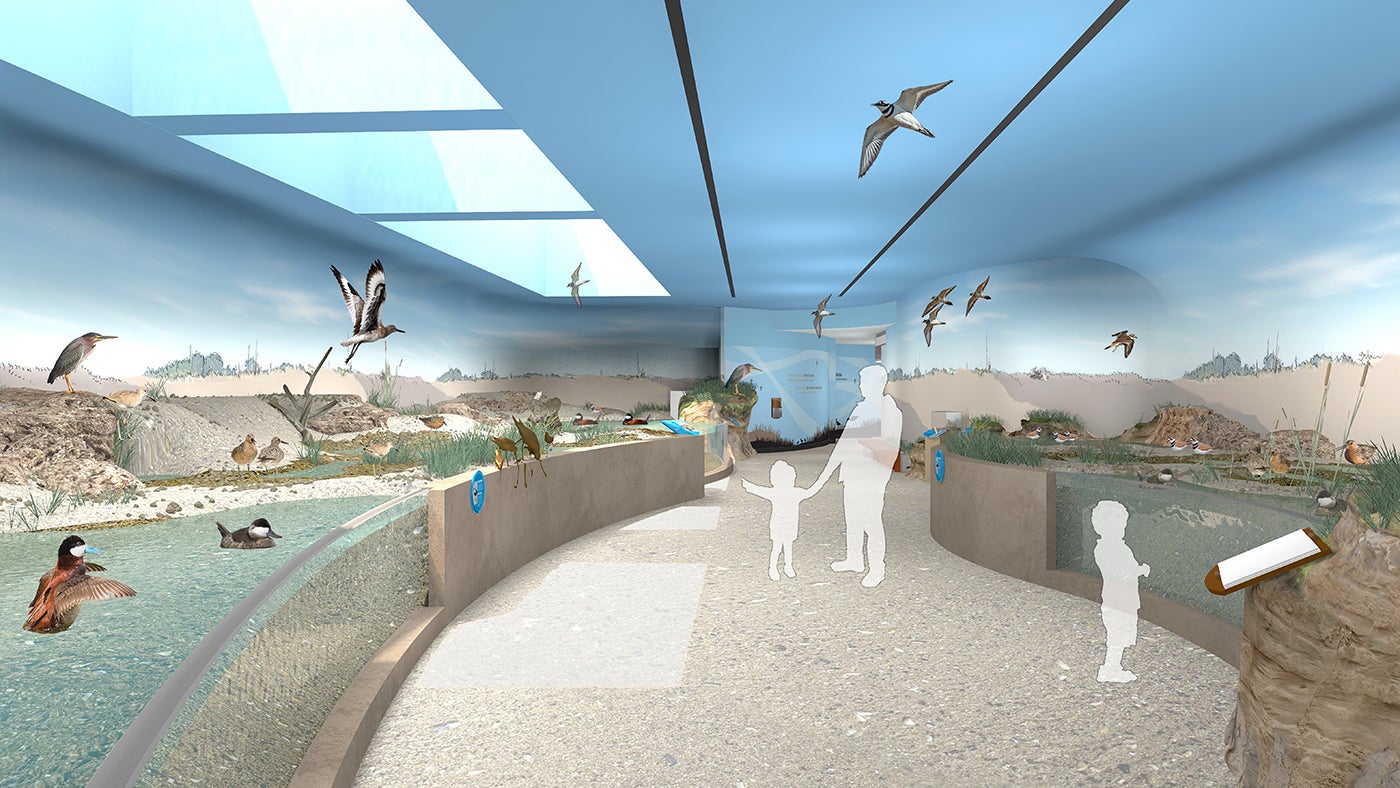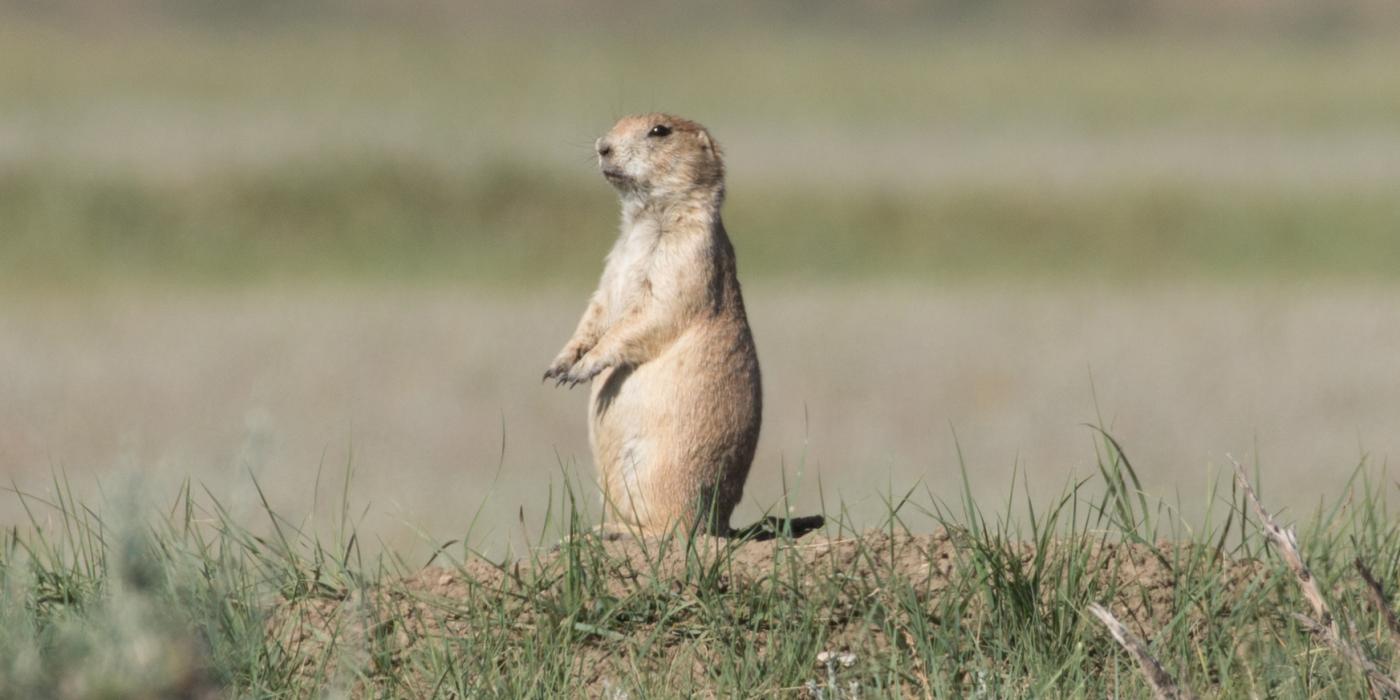Satellite Transmitters Reveal Migratory Patterns of Snail Kites in South America
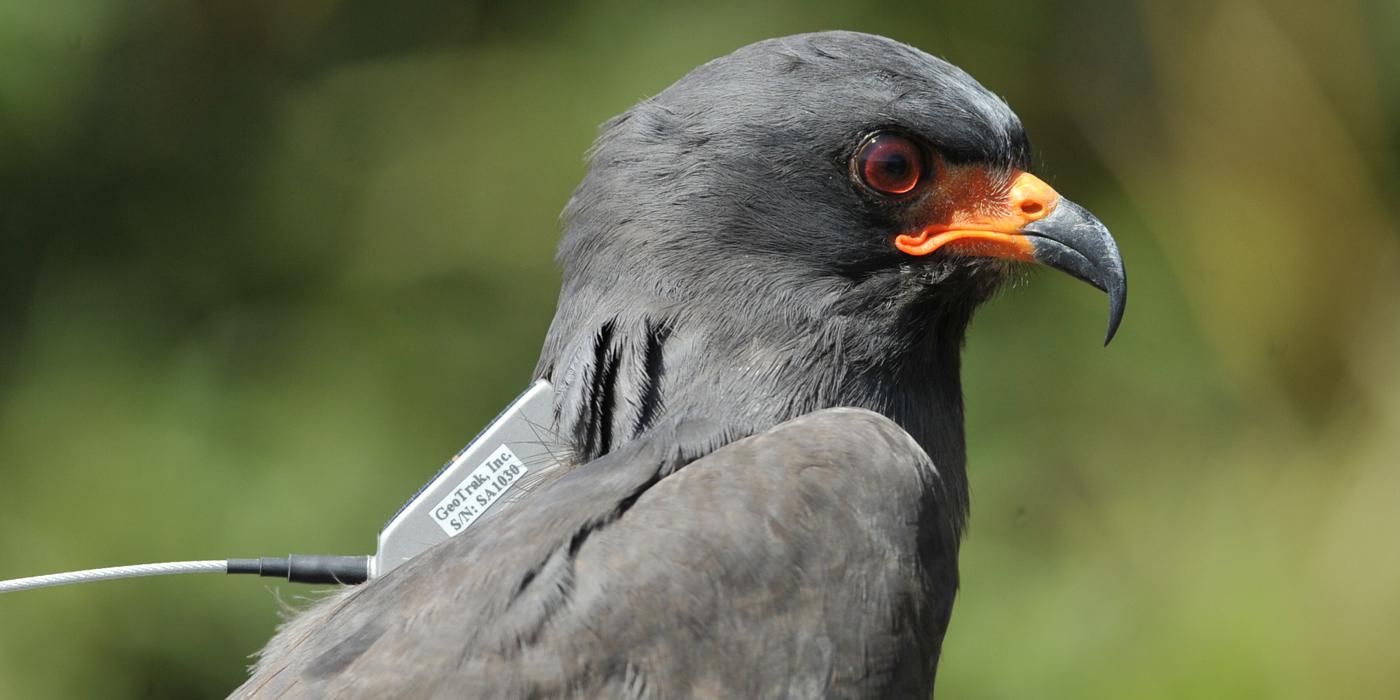
In November 2017, Smithsonian Migratory Bird Center postdoctoral fellow Alex Jahn traveled to southern Brazil to study the migration of snail kites with Brazilian colleagues at Taim Ecological Station.

One of those species, the snail kite, nests at the station from October to January in loose colonies. Snail kites place their nests in reeds just above the water. A typical nest holds two to four eggs.
Navigating to the areas where these birds forage for snails requires the use of kayaks. Once a snail kite catches its prey, it takes it to a nearby perch to extract the snail from its shell. Researchers place traps on these perches to catch the kites.
Once a bird is caught, they take several measurements — including bill length, wing chord and molt condition — being careful not to come in contact with the kite’s sharp talons in the process.
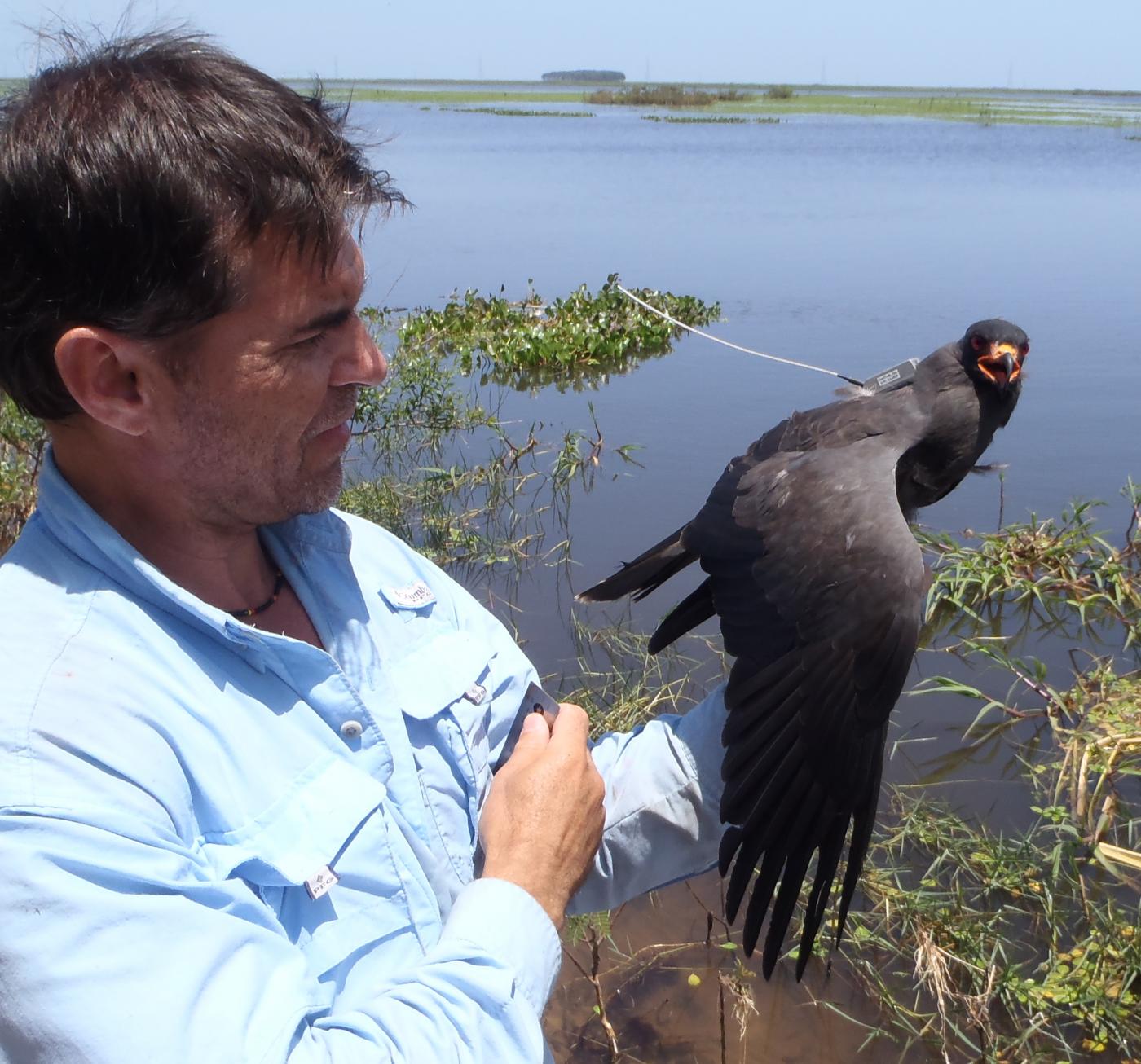
The snail kite is then released with a satellite transmitter, which will provide information on the dates of its movements between wetlands, as well as the routes it follows.
